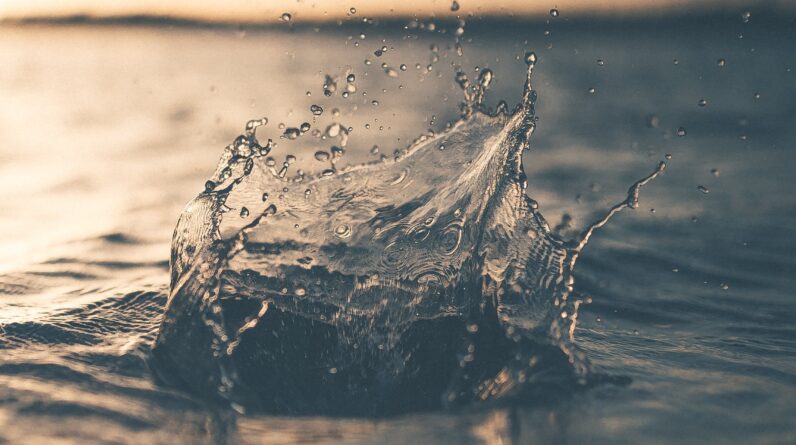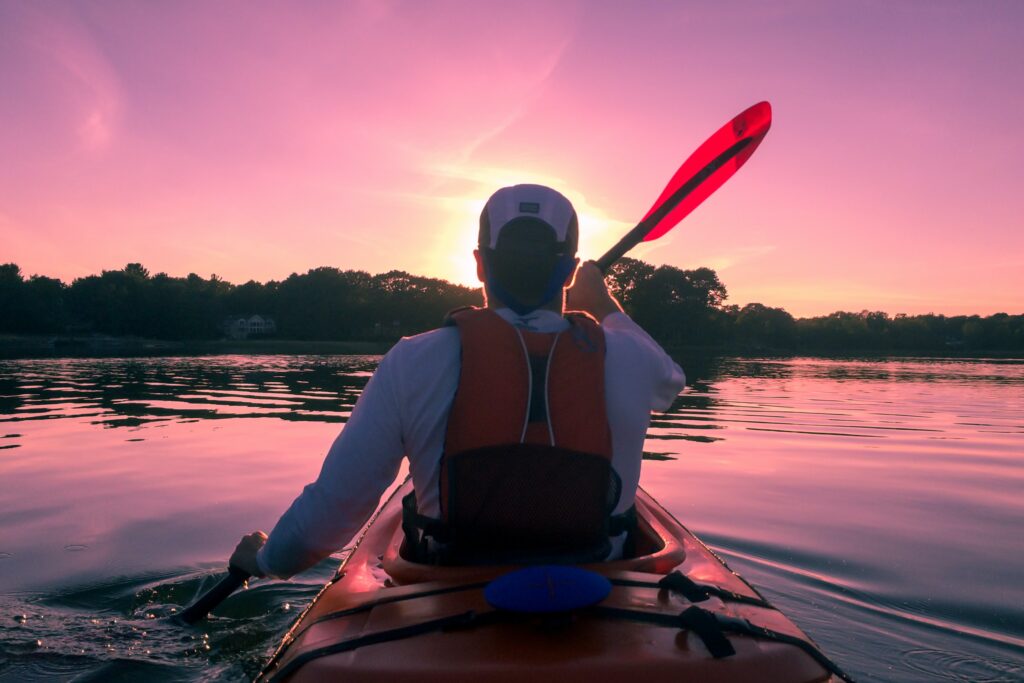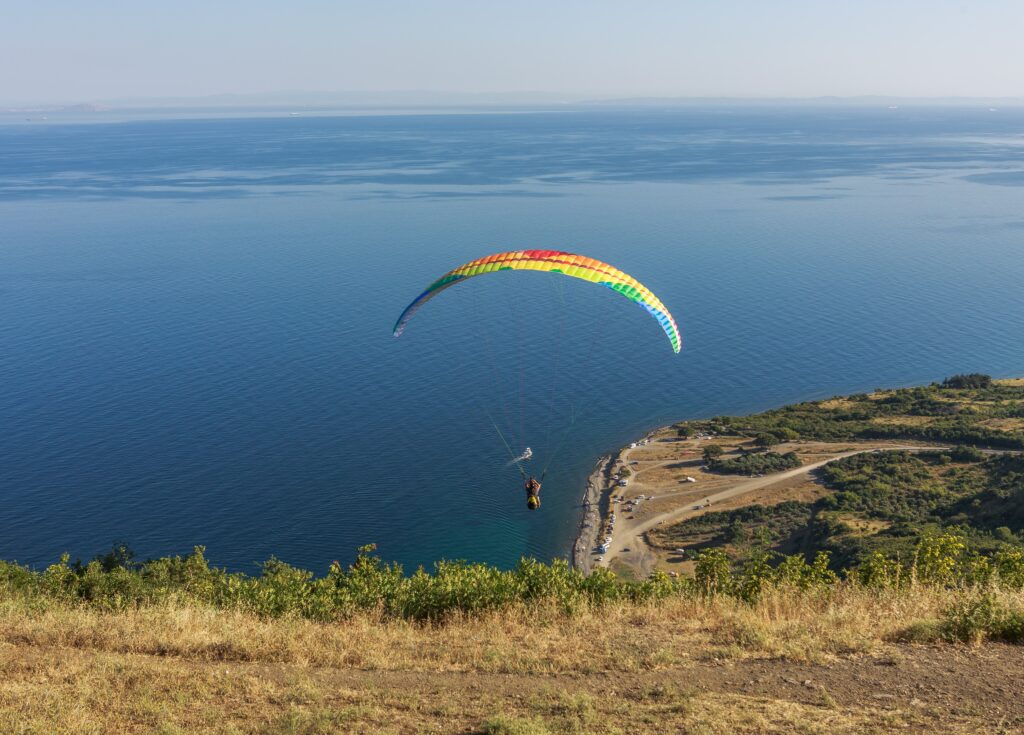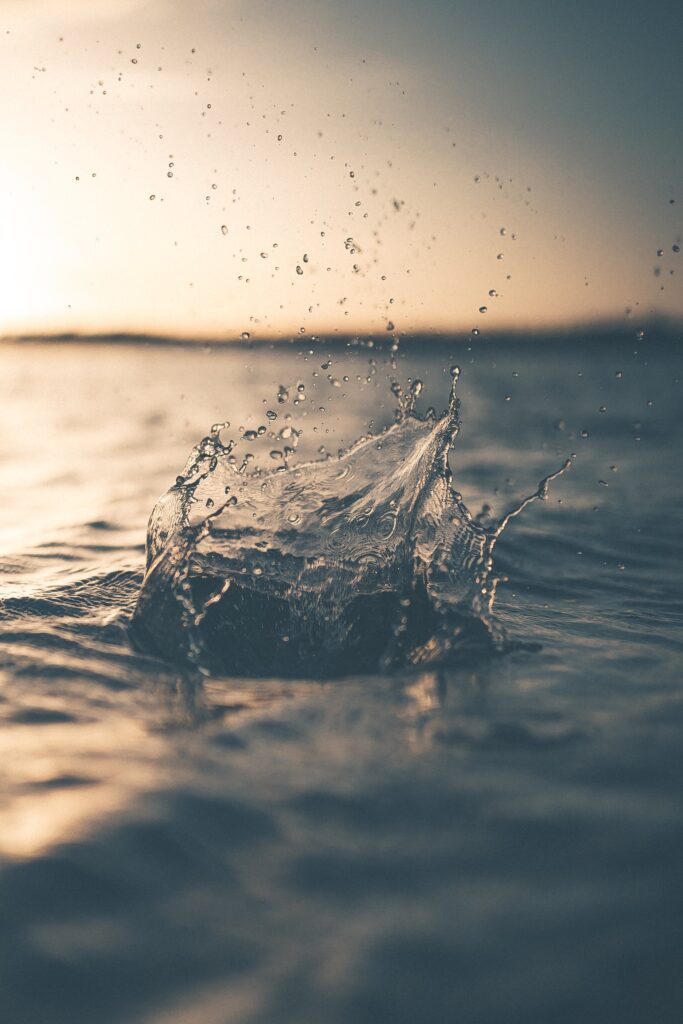
Imagine gliding through serene waterways, the sun kissing your skin as you paddle gracefully in an inflatable canoe or kayak. In recent years, these versatile watercrafts have taken the adventure world by storm, offering a convenient and lightweight alternative to their traditional counterparts. Whether you’re a seasoned explorer or a first-time paddler, inflatable canoes and kayaks offer a thrilling way to immerse yourself in the beauty of nature while providing the ease and flexibility to navigate even the trickiest of waterways. So, pack your sense of adventure, grab your paddles, and embark on a journey to discover the wonders that await you on the water.

Benefits of Inflatable Canoes and Kayaks
Portability
One of the major benefits of inflatable canoes and kayaks is their portability. Unlike traditional canoes and kayaks, inflatable ones can be easily deflated and packed into a compact size. This makes them ideal for those who love to explore different waterways and travel to different destinations. Whether you’re going on a road trip or flying to a new location, you can simply deflate your inflatable canoe or kayak and stow it away in the trunk of your car or in a small bag. This convenience allows you to bring your watercraft with you wherever you go, ensuring that you never miss an opportunity for a thrilling water adventure.
Easy Storage
Inflatable canoes and kayaks are also incredibly easy to store. Traditional canoes and kayaks occupy a significant amount of space, requiring docks, garages, or storage sheds to keep them protected from the elements. On the other hand, inflatable canoes and kayaks can be stored in small spaces, such as closets or even under a bed. This means that even if you live in a small apartment or don’t have access to dedicated storage for your watercraft, you can still enjoy the benefits of owning a canoe or kayak without the hassle of finding space to store it.
Durability
Many people are skeptical about the durability of inflatable canoes and kayaks, assuming that they might puncture easily. However, modern inflatable watercraft are made from tough and durable materials, such as PVC or Nitrylon, which are designed to withstand the rigors of the water environment. These materials are resistant to abrasions and punctures, providing you with a reliable and long-lasting watercraft. So, even if you accidentally scrape against rocks or encounter sharp objects in the water, your inflatable canoe or kayak is likely to remain intact, allowing you to enjoy your water adventures without any worries.
Types of Inflatable Canoes and Kayaks
Self-bailing Inflatable Canoes
Self-bailing inflatable canoes are designed with small holes or ports along the bottom or sides of the watercraft. These openings allow water to enter the canoe, but they also quickly drain out through the same holes. This design is particularly useful when navigating through rapids or choppy waters, as it prevents the canoe from filling up with water and becoming unstable. Self-bailing inflatable canoes are commonly used in whitewater rafting and provide an exciting and adrenaline-filled experience for thrill-seekers.
Sit-on-top Inflatable Kayaks
Sit-on-top inflatable kayaks are a popular choice for recreational paddlers. As the name suggests, these kayaks have an open-top design, allowing you to sit comfortably on the kayak without feeling confined. They are stable, easy to maneuver, and suitable for beginners. Sit-on-top inflatable kayaks are great for recreational activities like fishing, as they provide ample space for storing gear and equipment. They are also a fantastic option for those who enjoy swimming or snorkeling, as you can easily hop on and off the kayak for a quick dip in the water.
Sit-in Inflatable Kayaks
Sit-in inflatable kayaks are designed with a cockpit-style seating area, where you sit inside the kayak and have a skirt that keeps water from entering the cockpit. This design offers more protection from splashing water and provides better insulation, making sit-in inflatable kayaks suitable for colder weather conditions. These kayaks are often preferred by experienced paddlers who enjoy longer trips or expeditions. Sit-in inflatable kayaks offer better control and efficiency for navigating through calm waters or touring on lakes and rivers.
Choosing the Right Inflatable Canoe or Kayak
Weight Capacity
When choosing an inflatable canoe or kayak, it’s essential to consider the weight capacity. Each watercraft has a specific weight limit, indicating the maximum weight it can safely carry without compromising stability and performance. It’s crucial to factor in your body weight, as well as any additional gear or equipment you plan to bring along on your water adventures. Choosing a watercraft with a weight capacity that exceeds your needs will ensure a safe and comfortable experience on the water.
Length and Width
The length and width of an inflatable canoe or kayak are essential factors to consider as they directly impact the performance and stability of the watercraft. Longer canoes and kayaks tend to be faster and track better in a straight line, making them suitable for touring or long-distance paddling. However, longer watercraft may be more challenging to maneuver in tight spaces or in narrow waterways. On the other hand, wider canoes and kayaks offer better stability, making them a great choice for beginners or those who prefer a more relaxed paddling experience. It’s important to find the right balance between length and width, depending on your skill level and the type of paddling you plan to do.
Material
The material of an inflatable canoe or kayak plays a vital role in its durability and performance. PVC and Nitrylon are two commonly used materials in inflatable watercraft. PVC is lightweight, affordable, and provides good resistance to UV rays. Nitrylon, on the other hand, is more durable, resistant to punctures, and performs better in extreme temperatures. Consider the conditions in which you’ll be using your canoe or kayak and choose a material that suits your needs and preferences.
Additional Features
Some inflatable canoes and kayaks come with additional features that can enhance your paddling experience. These features can include padded seats for added comfort during long trips, adjustable footrests for improved paddling efficiency, fishing rod holders for anglers, and storage compartments for gear and supplies. Evaluate your specific needs and look for a watercraft that offers the features that will make your time on the water more enjoyable and convenient.
Inflating and Deflating Techniques
Using a Pump
Inflating an inflatable canoe or kayak is a relatively simple process, especially when using a pump designed specifically for inflatables. Most pumps come with multiple nozzle attachments and include instructions for the correct inflation technique. Start by attaching the appropriate nozzle to the pump and securing it to the watercraft’s valve. Pump the air into the watercraft until it reaches the recommended pressure, as indicated by the manufacturer’s guidelines. To deflate the watercraft, remove the nozzle from the valve and open the valve to release the air. Make sure to fold or roll the deflated watercraft carefully for easy storage.
Manual Inflation and Deflation
If you don’t have access to a pump, or you prefer a more hands-on approach, you can manually inflate your canoe or kayak. While this method requires more effort and time, it can be done without any specialized equipment. To manually inflate your watercraft, open the valve and blow air into it using your mouth or a small hand pump. Keep inflating until it reaches the desired pressure. To deflate the watercraft, open the valve and squeeze the air out while manually compressing the inflated chambers. This method may take longer and require more physical exertion, but it’s a viable option when a pump is not available.

Safety Considerations
Wearing a Personal Flotation Device
Safety should always be a top priority when engaging in any water activities, including inflatable canoeing and kayaking. One essential safety measure is wearing a personal flotation device (PFD) at all times. A PFD is designed to keep you afloat in case of an emergency or if you accidentally fall into the water. Make sure to choose a PFD that is suitable for your weight and size, and ensure that it is properly fastened and adjusted. Wearing a PFD can provide you with peace of mind and can potentially save your life in dangerous situations.
Checking Weather Conditions
Before heading out on your inflatable canoe or kayak adventure, it’s crucial to check the weather conditions in your area. Wind, rain, or thunderstorms can significantly affect the safety of your water excursion. Strong winds and thunderstorms can create hazardous conditions, making it difficult to maneuver your watercraft or potentially causing capsizing. It’s important to keep an eye on the weather forecast and plan your trip accordingly. If unfavorable weather conditions are predicted, it’s best to reschedule your paddling adventure to a safer time.
Maintaining Balance
Maintaining balance is key when paddling an inflatable canoe or kayak. These watercraft are designed to provide stability on the water, but excessive movement or sudden shifts in weight distribution can result in capsizing. It’s important to distribute your weight evenly and keep your center of gravity low. Sit or kneel in the center of the canoe or kayak and use your core muscles to maintain balance while paddling. Avoid making sudden movements or standing up in the watercraft unless it is specifically designed for that purpose. With practice, you’ll develop a better sense of balance and feel more confident on the water.
Avoiding Strong Currents
When paddling in rivers or streams, it’s important to be aware of the water currents and avoid areas with strong and swift-flowing water. Inflatable canoes and kayaks can be easily influenced by strong currents, making it difficult to control and navigate your watercraft. If you’re a beginner or unfamiliar with the waterway, it’s best to stick to calmer sections or choose a guided tour to ensure your safety. Even experienced paddlers should exercise caution and avoid taking unnecessary risks in fast-moving water. Always put your safety first and enjoy the water in areas that are suitable for your skill level and experience.
Popular Waterways for Inflatable Canoeing and Kayaking
Rivers
Rivers are a fantastic playground for inflatable canoeing and kayaking enthusiasts. From calm and peaceful stretches to fast-paced and thrilling rapids, rivers offer a diverse range of experiences for all skill levels. Whether you’re looking for a leisurely day on a slow-moving river or an adrenaline-pumping whitewater adventure, there’s a river out there that will cater to your preferences. Some popular rivers for inflatable canoeing and kayaking include the Colorado River in the United States, the Whanganui River in New Zealand, and the Ardeche River in France.
Lakes
Inflatable canoes and kayaks are also well-suited for exploring lakes, which provide a serene and peaceful setting for paddling. Lakes offer calm and still waters, allowing you to enjoy a relaxing paddle while taking in the beautiful surroundings. They provide an excellent opportunity for picnics on secluded beaches, fishing trips, or simply enjoying the tranquility of nature. Some popular lakes for inflatable canoeing and kayaking include Lake Tahoe in the United States, Lake Bled in Slovenia, and Lake Louise in Canada.
Ocean Bays
For those seeking an adventurous and breathtaking experience, inflatable canoes and kayaks can be used to explore ocean bays. Ocean bays offer a chance to paddle along stunning coastlines, discover hidden coves, and witness marine life up close. However, it’s important to note that kayaking in the ocean requires additional skills and precautions due to potentially unpredictable conditions, such as waves and tides. Always check the weather and oceanographic conditions before setting out, and consider joining a guided tour or taking lessons if you’re new to ocean kayaking. Popular ocean bays for inflatable canoeing and kayaking include the Gulf of California in Mexico, Milford Sound in New Zealand, and the Halong Bay in Vietnam.
Canals
Inflatable canoes and kayaks can also be used to explore the intricate canal systems found in various parts of the world. Canals provide a unique and charming waterway experience, allowing you to navigate through historic cities, picturesque countryside, and cultural landmarks. Exploring canals by canoe or kayak offers a different perspective and allows you to immerse yourself in the local culture and architecture. Some popular canals for inflatable canoeing and kayaking include the canals in Venice, Italy, the canals in Amsterdam, Netherlands, and the canals in Bangkok, Thailand.

Best Practices for Inflatable Canoeing and Kayaking
Planning Ahead
Before setting off on a canoeing or kayaking adventure, it’s important to plan your trip ahead of time. Research the waterway you’ll be paddling on, including any potential hazards, entry and exit points, and local regulations. Check if any permits or licenses are required and ensure that you have the necessary equipment and supplies for your trip. Consider the weather conditions, tides, and currents, and plan your route accordingly. By planning ahead, you’ll have a smoother and more enjoyable experience on the water.
Packing Essential Gear
When embarking on an inflatable canoeing or kayaking trip, it’s crucial to pack essential gear to ensure your safety and comfort. Aside from carrying a personal flotation device, it’s advisable to bring a whistle or a signaling device to attract attention in case of an emergency. It’s also important to have a proper waterproof bag or dry bag to protect your personal belongings, such as phones, cameras, and extra clothes, from getting wet. Additionally, bringing a water bottle or hydration pack, sunscreen, a hat, and sunglasses will help protect you from the sun and keep you hydrated during your paddling adventure.
Knowing Basic Paddling Techniques
To fully enjoy your inflatable canoe or kayak experience, it’s beneficial to have a basic understanding of paddling techniques. This includes learning how to hold and use a paddle correctly, how to perform basic strokes such as forward and backward paddling, and how to steer and turn your watercraft efficiently. Familiarize yourself with different strokes, such as the sweep stroke and the draw stroke, as they can help you navigate through various water conditions and improve your overall control and maneuverability. Taking a paddling course or lessons can be extremely helpful, especially for beginners or those looking to improve their skills.
Being Mindful of the Environment
When exploring waterways with your inflatable canoe or kayak, it’s important to be mindful of the environment and practice responsible paddling. Always follow leave-no-trace principles, which involve packing out your trash, avoiding disruption to wildlife, and respecting natural habitats. Take care not to disturb or damage sensitive ecosystems, such as coral reefs or nesting areas for birds. Avoid using chemicals or pollutants that can harm aquatic life and opt for eco-friendly cleaning products when washing your watercraft. By being a responsible paddler, you can help preserve the beauty of the waterways for future generations to enjoy.
Exploring Wildlife on Waterways
Birdwatching
Inflatable canoes and kayaks offer a unique vantage point for birdwatching enthusiasts. Paddling quietly through the water allows you to get closer to various bird species without disturbing them. Be on the lookout for waterfowl, such as ducks and swans, as well as wading birds like herons and egrets. Coastal areas may provide opportunities to spot seabirds like seagulls and terns. Additionally, keep an eye out for birds of prey, such as eagles and ospreys, soaring overhead. Remember to bring binoculars and a field guide to help you identify and learn more about the birds you encounter.
Spotting Marine Animals
In addition to birdwatching, inflatable canoes and kayaks provide an excellent opportunity to spot marine animals in their natural habitats. You might encounter seals, sea lions, or even dolphins while paddling along the coastlines or in the open ocean. In calm and clear waters, you may be lucky enough to see sea turtles gracefully gliding beneath the surface. If you’re exploring freshwater waterways, keep an eye out for otters, beavers, or even playful river dolphins, depending on the region. Always maintain a safe distance and avoid disturbing the animals, allowing them to go about their activities undisturbed.
Identifying Different Fish Species
While paddling through rivers or lakes, you can observe and identify different fish species that inhabit those waterways. Look for fish swimming near the surface or around submerged structures, such as fallen logs or overhanging vegetation. By learning about fish behavior and their preferred habitats, you can increase your chances of spotting various species. Pay attention to the coloration, shape, and movement patterns of the fish you encounter to help with identification. It’s essential to handle fish gently and return them to the water as quickly as possible, ensuring their well-being and preserving the ecosystem.
Maintaining Inflatable Canoes and Kayaks
Cleaning After Each Use
After each paddle adventure, it’s crucial to clean your inflatable canoe or kayak thoroughly. Rinse off any dirt, sand, or debris from the watercraft using fresh water. Pay special attention to the seams and crevices, as these areas tend to accumulate dirt and grime. Use a mild soap or a specialized cleaning solution designed for inflatable watercraft and a soft brush to remove any stubborn stains. Avoid using harsh chemicals or abrasive materials, as they can damage the fabric or coating of the watercraft. Once cleaned, allow your canoe or kayak to dry completely before storing it to prevent mildew or mold growth.
Storing Properly
Proper storage is essential for maintaining the longevity of your inflatable canoe or kayak. Make sure the watercraft is completely dry before deflating and folding it for storage. Remove any removable parts, such as seats or footrests, and store them separately. Fold or roll the deflated watercraft according to the manufacturer’s instructions, making sure to remove any excess air. Avoid sharp objects or surfaces that could potentially puncture or damage the watercraft. Store your inflatable canoe or kayak in a cool and dry place, away from direct sunlight, extreme temperatures, or other harmful elements.
Repairing Punctures
Despite the durability of inflatable canoes and kayaks, accidents happen, and punctures can occur. It’s important to address any punctures or damage promptly to prevent further issues. Most inflatable watercraft come with a repair kit that includes patches and adhesive specifically designed for the material of the watercraft. Before applying a patch, ensure that the damaged area is clean and dry. Cut a patch larger than the puncture and round the edges to prevent peeling. Apply the adhesive to the patch and press it firmly onto the damaged area, following the manufacturer’s instructions. Allow the patch to cure completely before reinflating the watercraft.
Joining Organized Inflatable Canoe and Kayak Trips
Benefits of Group Trips
Joining organized inflatable canoe and kayak trips offers numerous benefits for paddlers of all skill levels. Group trips provide opportunities to learn from experienced guides and fellow paddlers, allowing you to improve your skills and knowledge. Safety is enhanced as you paddle in a group, with others available to offer assistance or support if needed. Group trips also offer a sense of camaraderie and the opportunity to make new friends who share your passion for water adventures. Additionally, by participating in organized trips, you gain access to expertly planned routes, special permissions, and insider knowledge that can enhance your overall experience.
Finding Local Groups or Clubs
To find organized inflatable canoe and kayak trips, consider connecting with local paddling groups or clubs in your area. These groups often organize regular outings, ranging from leisurely paddles to more adventurous expeditions. They offer a wealth of knowledge about the local waterways, equipment recommendations, and safety tips. Paddling groups and clubs provide a supportive community of like-minded individuals who share a love for paddling. Engaging with these groups can offer valuable opportunities to learn, grow, and discover new waterways while surrounded by fellow enthusiasts.
Obtaining Necessary Permits
When participating in inflatable canoe and kayak trips, it’s important to ensure that you have any necessary permits or licenses. Many waterways, especially those in protected areas or under the management of parks and wildlife agencies, require permits for recreational boating. These permits help manage the number of visitors to ensure sustainability and protect the environment. It’s essential to familiarize yourself with the specific regulations of the waterway you intend to paddle and obtain any required permits before embarking on your trip. This ensures that you have a smooth and legal paddling experience while respecting the rules and regulations in place.
In conclusion, inflatable canoes and kayaks offer numerous benefits for those who are passionate about exploring waterways. Their portability, easy storage, and durability make them a convenient and reliable choice for adventurers of all skill levels. By choosing the right inflatable watercraft, practicing proper inflatable canoeing and kayaking techniques, and prioritizing safety, you can enjoy thrilling and memorable experiences on rivers, lakes, ocean bays, and canals. From birdwatching to spotting marine animals and identifying fish species, the opportunities for wildlife exploration are abundant. With proper maintenance, responsible paddling practices, and the option to join organized trips or connect with local groups, you can make the most of your inflatable canoeing and kayaking adventures. So, grab your paddle and embark on a remarkable journey to discover the wonders of the waterways.








